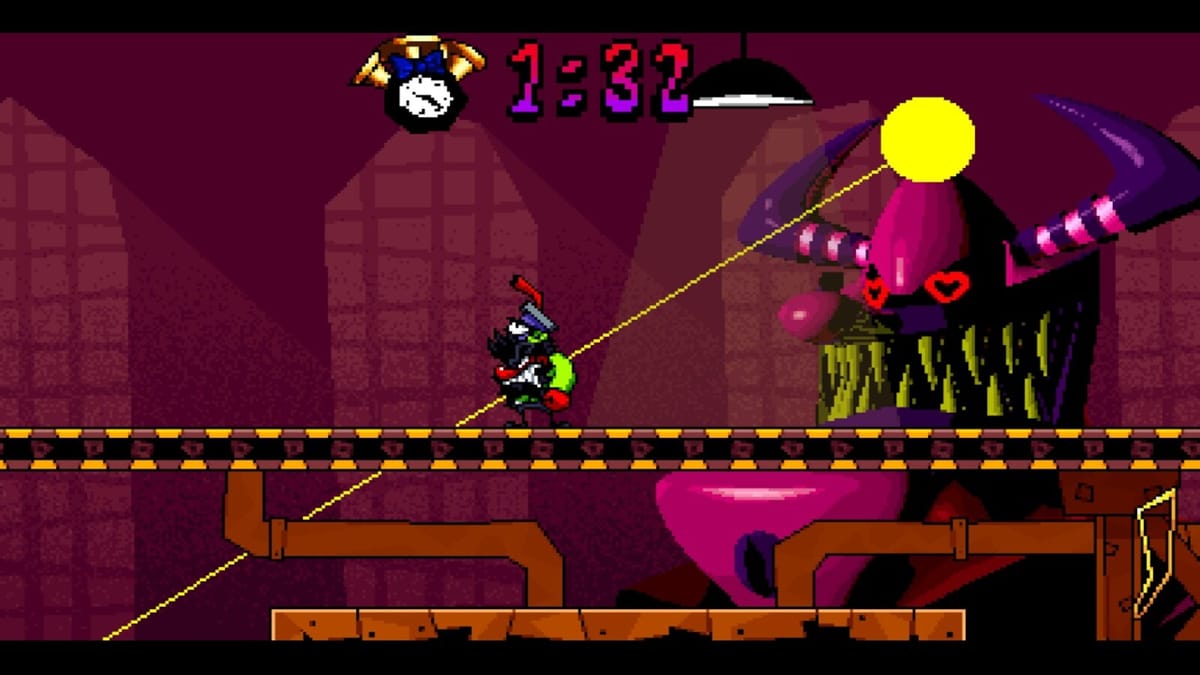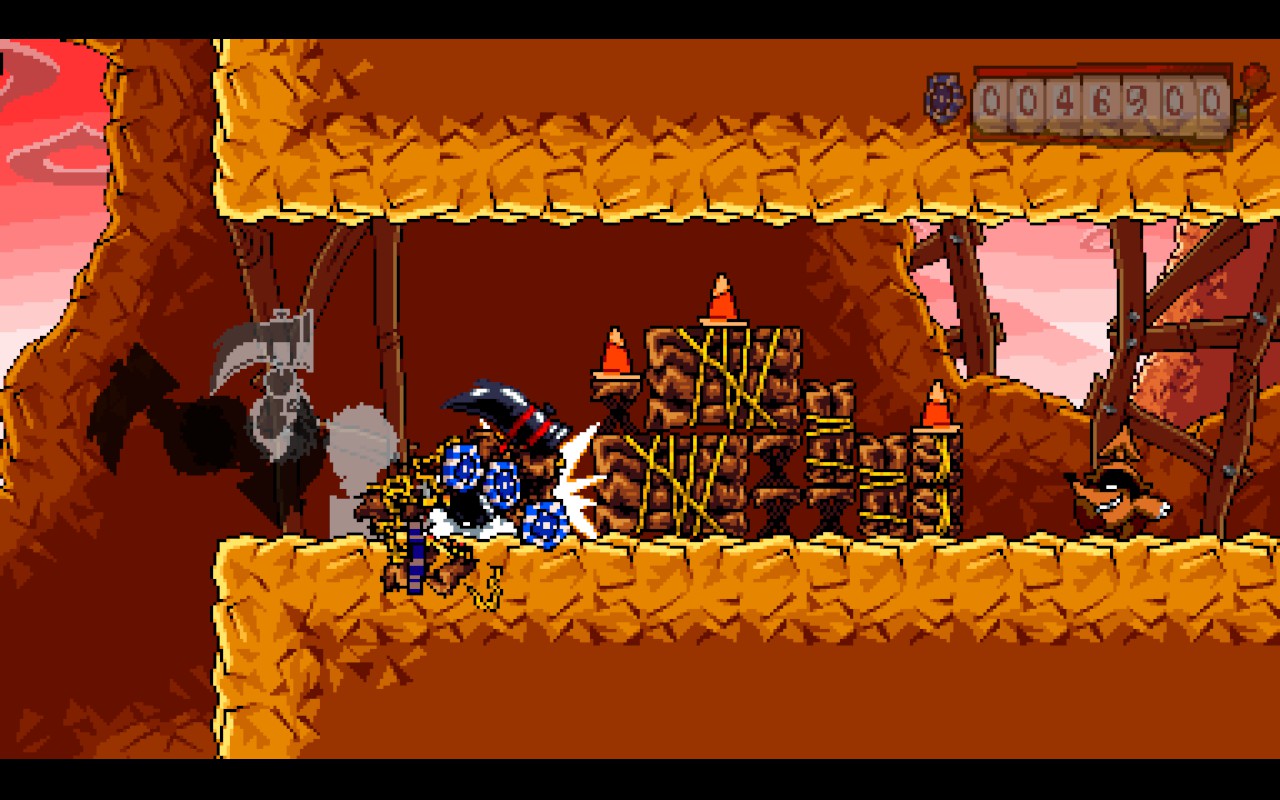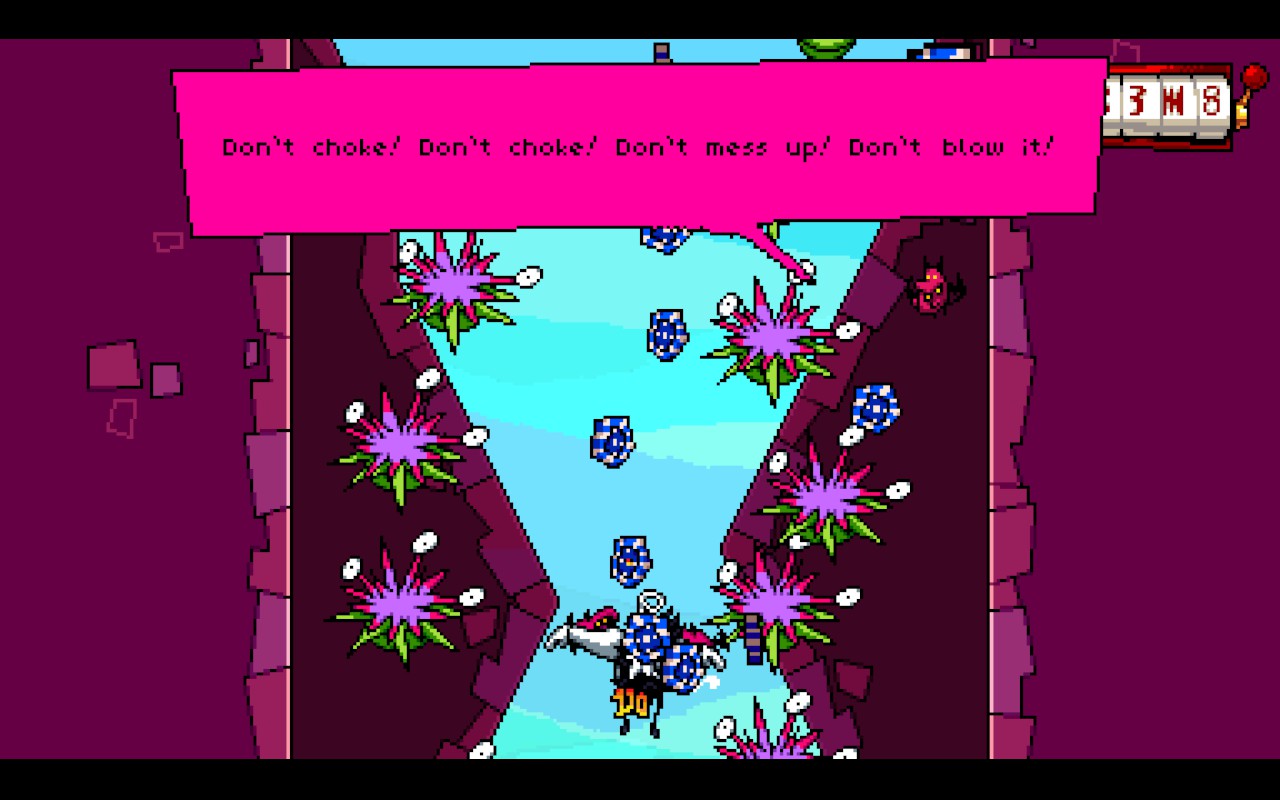
Antonblast has an explosive personality and it wants you to know it. Virtually every moment of this chaotic platformer blasts you with loud noises, violently shakes the screen, and overloads your senses with visual clutter. I don’t mind a game that is bursting with ideas, but these ones cause some collateral damage. Antonblast wants to be a wild ride while also being a precise and challenging one. These elements don’t mix so much as they explode on contact, making a giant mess. I rarely felt totally in control of Antonblast’s antics, but they create an undeniably entertaining spectacle.
Mechanically, Antonblast constantly pushes you into the madness. Your character primarily uses a dash move to lunge forward and break things – enemies, blocks, whatever happens to be in your way. Speedily plowing through obstacles gives the game a hurried sense of momentum and an innately satisfying appeal. The level design takes full advantage of how fun it is to crash into things by filling your path with things to effortlessly smash through.
I appreciate the excitement right up until I effortlessly smash into some spikes, explosives, or any other kind of hazard I didn’t see coming. Despite how easily you can overwhelm most of what lies in your path, Antonblast proves to be a fairly demanding platformer at heart. Fast reactions and a strong understanding of the game’s movement systems are vital to clearing it. Unfortunately, the speed of your dashes combined with the barrage of visual noise frequently turns a tricky challenge into an obnoxious one.
Antonblast succumbs to its desire for chaos to the detriment of the game as a whole. By doing so much to impede your ability to parse out upcoming hazards, it can often feel like the game is taking arbitrary potshots at your health bar. Control over what hits you may not literally be out of your hands, but the game design conveys the feeling it is all the same. The challenge revolves less around avoiding damage so much as remembering to avoid it on your next attempt.
A similar learning curve applies to even the basic controls of the game. You can bounce off enemies and objects with a mid-air hammer smash, but it’s surprisingly easy to accidentally bounce when you don’t want to. Each level usually subjects your character to a different transformation gimmick that changes the nature of the gameplay entirely. Whether it’s flying through the air or working your way through a recreation of a pinball machine, it takes a lot of practice to feel like you’re in control of this game. The pinball section in particular stands out because its flippers launch you in a way that bears no resemblance to how they would in an actual pinball machine – mistakes are mandatory.
Admittedly, all the intricacies of the controls can be learned through repetition; Antonblast just doesn’t provide an ideal environment for doing so. Even if you choose to ignore the speedy pace that the game mechanics obviously want you to move with, Antonblast adds outside pressures to its sink-or-swim scenarios. Transformations only last so long before you revert to your original form. The last stretch of each level involves a race back to the entrance of the level. In Antonblast, you must keep moving, you must keep taking damage, and you must keep trying again.
Despite the fundamentally messy nature of the gameplay, overcoming Antonblast’s challenges are rewarding. Getting through a tough section and especially defeating the bosses provides the kind of satisfaction that many platformers these days tend to shy away from. I like it when a game puts up a fight – I just wish this one in particular would stop throwing mud in my eyes before it throws out a punch.
Sadly, Antonblast didn’t pull me into wanting to go further than beating it. Any inclination to replay levels for faster times, high scores, or all the collectibles got quickly drowned out by how inconvenient it is to replay. It’s easy to mess up a section, and doing so often locks you out of secrets until you restart the level or die. When the low margin for error joins forces with how long the levels are, they make a convincing argument for simply moving on with my life.
Instead of filling the role of a highly replayable hardcore action game, Antonblast more convincingly plays the role of an entertaining drunk at a pub. It’s loud, has a lot of personality, and you’re curious to see what it does next. The aesthetics take a lot from the Wario Land series and the early Cartoon Network cartoons (with voice acting to match). Its artwork, animations, and seemingly endless desire to escalate keeps the game entertaining even when it otherwise starts to annoy you. These levels and bosses have almost as many fake-out endings as real ones – as if the developers had an overflow of ideas they just had to cram into the game.
Yet at the same time, you can only be around a game like Antonblast for so long. For as loud and entertaining as it can be, the experience wears you out over a couple of hours. Rather than partying the night away, it’s much more tempting to call it a night and go home early.
ANTONBLAST
All Right
Antonblast is chaotic to a fault. Its explosive personality makes for an entertaining spectacle, but it left me wanting for a more controlled detonation.
Pros
- Explosive personality
- Leaves a mess of fun game ideas
Cons
- Chaos clashes with the gameplay
- Wears you out to be around



